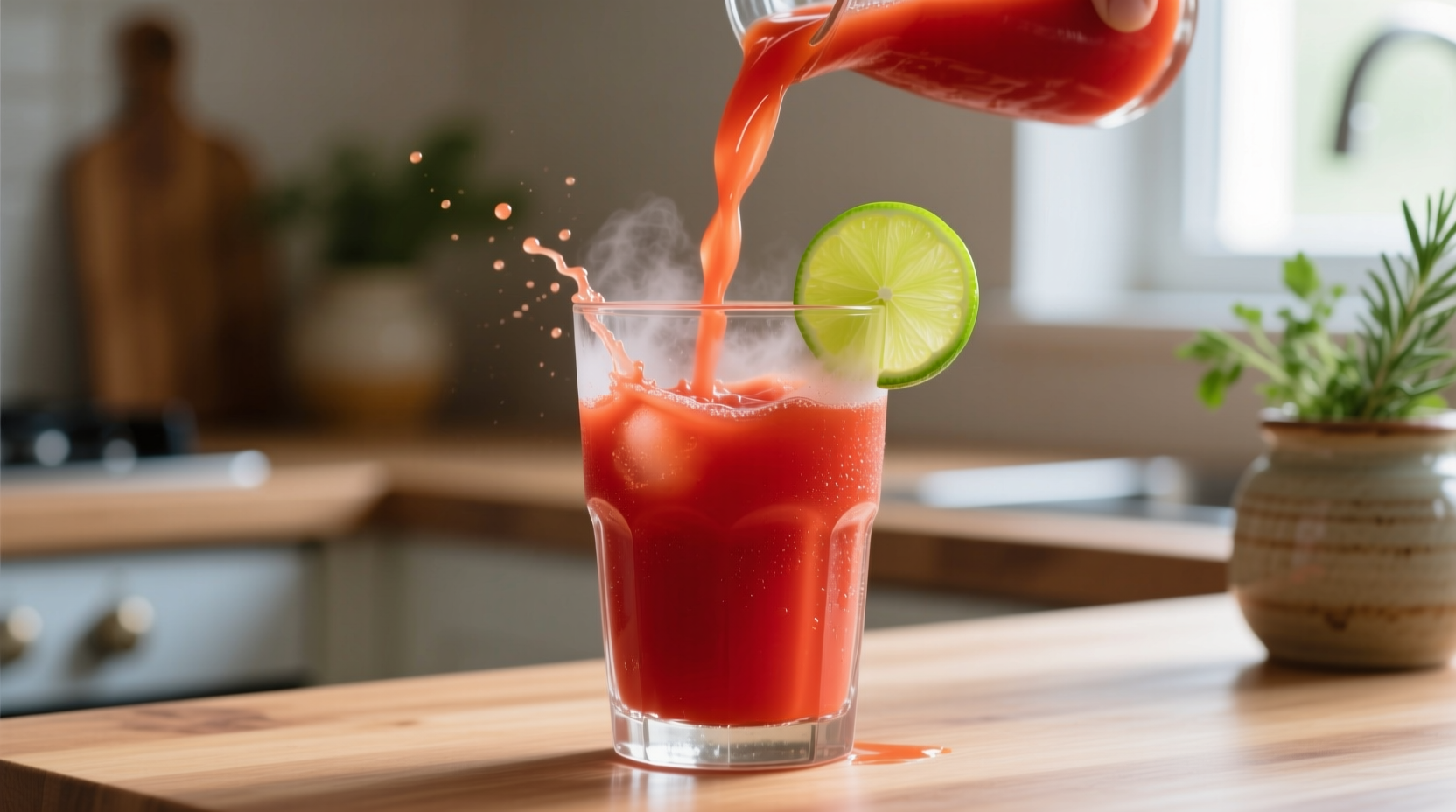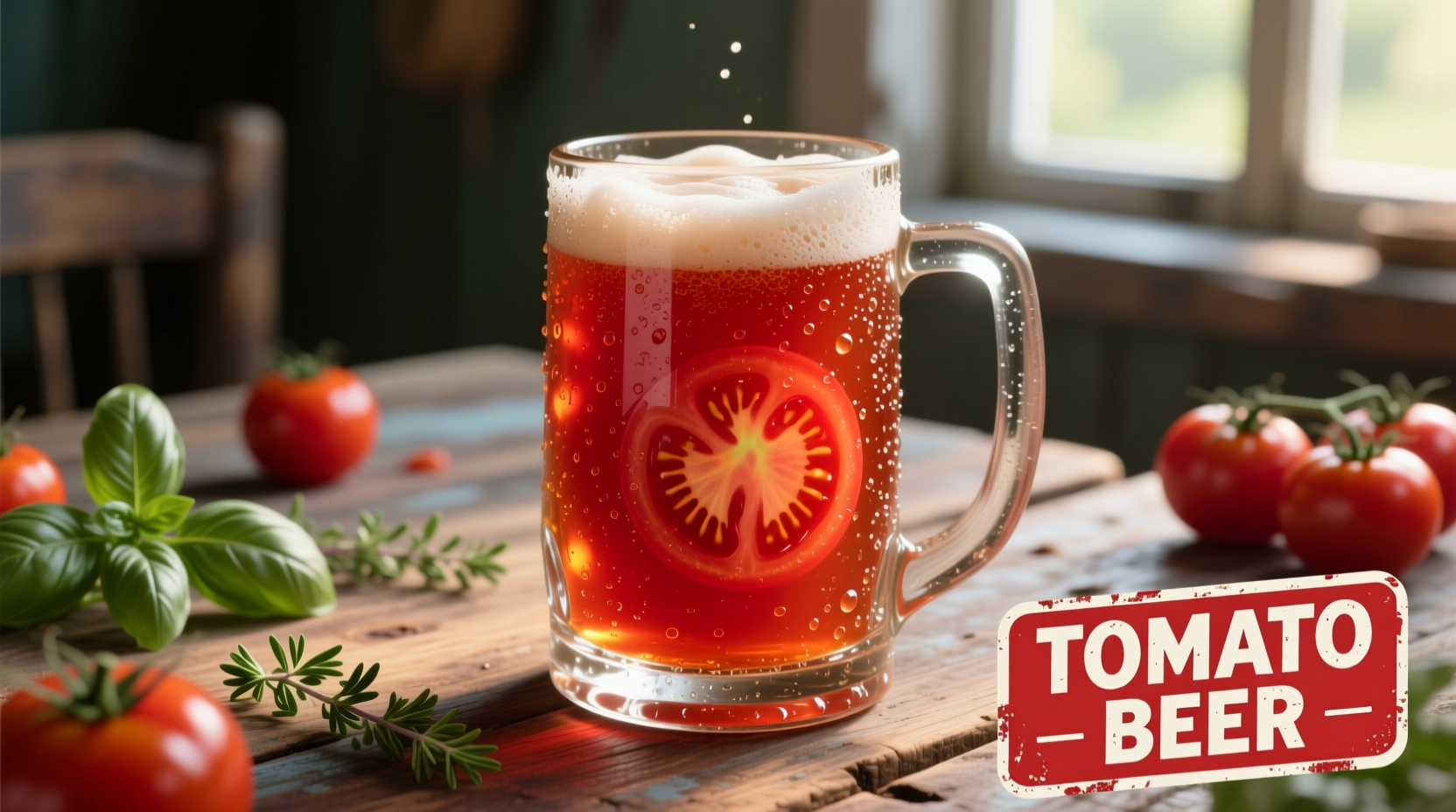Demystifying Tomato Beer: Two Interpretations You Need to Know
When you search for "tomato beer," you're likely encountering one of two distinct concepts that often get confused. Let's clarify both interpretations with factual accuracy so you can explore this topic with confidence.
Tomato-Based Beverages: The Non-Alcoholic "Beer" Style Drinks
Historically, "tomato beer" most commonly refers to non-alcoholic tomato beverages that mimic the appearance and sometimes the carbonation of beer. These drinks emerged during Prohibition in the United States when breweries needed alternative products. According to the Library of Congress Prohibition Collection, many breweries produced "near beer" alternatives including tomato-based beverages.
These tomato tonics typically feature:
- Fresh tomato juice as the base ingredient
- Natural carbonation or effervescence
- Herbal additions like celery salt and black pepper
- Zero to minimal alcohol content (usually under 0.5%)
| Traditional Ingredients | Modern Variations | Flavor Profile |
|---|---|---|
| Fresh tomatoes | Heirloom tomato varieties | Bright, acidic |
| Lemon juice | Lime or vinegar alternatives | Tangy, refreshing |
| Worcestershire sauce | Smoked paprika or liquid smoke | Umami, savory |
| Hot sauce | Infused chili oils | Spicy kick |
The Culinary Application: Beer in Tomato-Based Recipes
The second interpretation involves using actual beer in recipes featuring tomatoes. This technique leverages beer's complex flavor compounds to enhance tomato dishes. Food science research from the Institute of Food Technologists explains that beer's bitterness and carbonation can balance tomato acidity while its malt notes complement tomato sweetness.
Professional chefs often use this pairing in:
- Tomato-based stews and braises
- Barbecue sauces with tomato foundations
- Seafood dishes featuring tomato broths
- Vegetable glazes and reductions

Creating Authentic Tomato Beverages at Home
Recreating historical tomato "beer" requires attention to both flavor balance and food safety. The National Center for Home Food Preservation provides guidelines for safely preparing tomato-based beverages:
- Use only ripe, blemish-free tomatoes (pH below 4.6 for safe preservation)
- Maintain proper acidification with lemon juice or citric acid
- Process in a boiling water bath for recommended times
- Store in properly sealed containers away from light
For a basic recipe that follows these safety guidelines:
- 6 lbs ripe tomatoes, cored and quartered
- 1 lemon, juiced (provides necessary acidity)
- 1 tsp celery salt
- 1/4 tsp black pepper
- 2 tbsp Worcestershire sauce
- Hot sauce to taste
Simmer tomatoes until soft, strain through fine mesh, then combine with other ingredients. Chill thoroughly before serving over ice with lemon wedge garnish. This creates approximately 1 gallon of refreshing tomato beverage with no alcohol content.
Optimizing Beer and Tomato Pairings in Cooking
When using actual beer with tomatoes, understanding flavor chemistry produces superior results. The Food Chemistry Journal notes that tomato's glutamic acid interacts with beer's bitter compounds to create enhanced umami perception.
Match beer styles to your tomato application:
- Stouts and porters work best with rich tomato sauces and braises
- Amber ales complement roasted tomato soups and stews
- Pilsners enhance fresh tomato salsas and cold soups
- Wheat beers pair well with tomato-based seafood dishes
Avoid highly hoppy IPAs with acidic tomato dishes, as the bitterness can become overwhelming. Instead, use them in small quantities for deglazing or finishing touches.
Common Misconceptions About Tomato Beer
Several myths persist about tomato beer that deserve clarification:
- Myth: Tomato beer is a commercially available alcoholic beverage category
Fact: No major breweries produce tomato-flavored beer as a standard offering - Myth: All tomato beverages contain alcohol
Fact: Most "tomato beer" recipes are non-alcoholic by design - Myth: Beer and tomatoes don't pair well together
Fact: Properly matched, they create complex flavor synergies
Practical Applications for Home Cooks
Integrating these concepts into your cooking requires understanding when each interpretation applies:
When you want a beverage: Prepare a non-alcoholic tomato tonic using the historical preparation method. This works well as a brunch alternative to Bloody Marys or as a refreshing summer drink.
When cooking tomato-based dishes: Substitute 1/4 to 1/2 cup of beer for an equal amount of liquid in your recipe. The carbonation helps tenderize ingredients while the malt balances acidity.
For the best results, always add beer early in the cooking process to allow alcohol evaporation while retaining flavor compounds. Reduce by half before incorporating into your tomato dish for concentrated flavor without excessive liquid.











 浙公网安备
33010002000092号
浙公网安备
33010002000092号 浙B2-20120091-4
浙B2-20120091-4